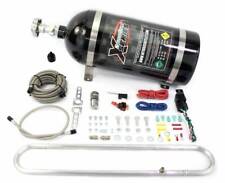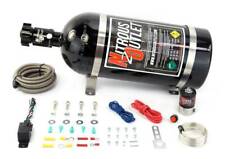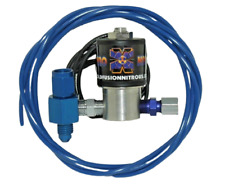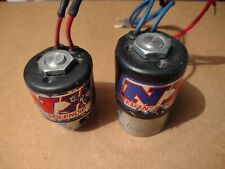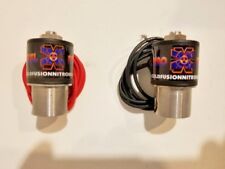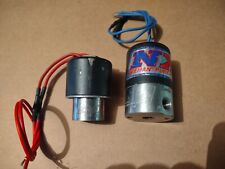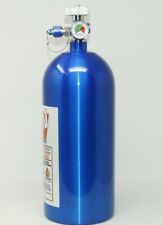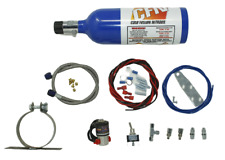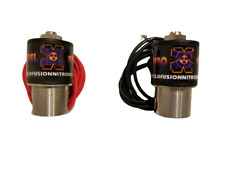New Smart ForTwo CDI gets 621 miles
While there is not start-stop fuel-saving technology as reported earlier this month, the brand spankin’ new Smart ForTwo cdi has an outstanding fuel consumption of just 3.3 liters per 100 kilometers. A full 33 liter tank, which will cost you European folks €38.00, will give you a traveling range of 1,000 km (621 miles).
Smart engineers have improved the new CDI engine from the predecessor by increasing power and torque by 10 percent, giving the Smart ForTwo the ability to do 0-60 mph in just an amazing 19.8 seconds (sarcasm implied).
The new Smart ForTwo cdi is available as a coupé and a cabrio with prices ranging from € 11,200 to € 16,240.
We can’t wait until diesel gets big in the US. We need one of these.
—
Press Release:
With fuel consumption of just 3.3 litres per 100 kilometres (NEDC) and emissions of 88 grams of carbon dioxide per kilometre the new smart fortwo cdi is the most economical production car worldwide. A full tank of fuel costs around €38.00 (assuming a litre price of €1.15) and 33 litres of fuel will take the 33 kW/45 bhp two-door car approximately 1,000 kilometres ““ for example theoretically from central Berlin to the outskirts of Paris without refuelling.
The smart engineers have improved the successful cdi engine from the predecessor model and equipped it for the future. The power and torque have each increased by ten percent, whilst the fuel consumption has decreased by around 13 percent. In figures this means power of 33 kW/45 bhp and maximum torque of 110 metres that is delivered between 2,000 and 2,500 rpm. The new smart fortwo cdi thus offers a combination of agility, economy and environmental compatibility that is unique in this class and that adds up to all-round driving fun.
This is thanks to the world’s smallest direct-injection diesel engine ““ a masterpiece of engine development ““ that boasts technology previously only found in larger capacity engines, despite its extremely compact dimensions. For example the latest generation common-rail direct injection which builds up high injection pressure of up to 1,600 bar (previously: 1,350 bar) even at low revs, and injects the fuel into the combustion chambers with newly developed six-hole injectors, enabling an even more efficient combustion process.
A turbo-charger, charge-air cooling, electrically controlled and cooled exhaust gas recirculation, hydraulic compensation of valve clearance and a state-of-the-art light alloy construction are further features that identify the cdi engine as a high-tech package.
The smallest direct-injection diesel engine with state-of-the-art technology
The three-cylinder engine has also adopted two-phase fuel injection from the CDI engines of its sister brand Mercedes-Benz. A few milliseconds before the main injection a small quantity of diesel is injected into the combustion chambers where it ignites and preheats the cylinders. This results in a noticeably quieter combustion noise level than an engine without this pilot injection. The electronic “brain” of the cdi engine ““ a high-performance micro-computer that controls the whole engine-transmission system ““ calculates how much fuel is needed and the interval at which pilot injection and main injection take place.
The quick response of the cdi engine is first and foremost thanks to the compact yet extremely effective turbocharger that is housed in the exhaust manifold. Its compressor wheel has a diameter of just 31 millimetres, yet it rotates at up to 290,000 rpm and builds up maximum charge pressure of approximately 1,150 millibars. This gives the three-cylinder engine more air to “breathe” and enables it to develop impressive torque: 85 metres are available even from 1,500 rpm ““ more than three quarters of the maximum torque.
This torque curve plays an important part in the fun behind the wheel that drivers experience with every kilometre driven in a smart fortwo cdi. The smart fortwo cdi accelerates from 0-100 km/h in 19.8 seconds and reaches a top speed of 135 km/h.
As before, the engines of the smart fortwo are fitted transversally in space-saving mode in front of the rear axle and they are inclined at an angle of 45 degrees towards the rear. The consistent use of lightweight materials means that the diesel engine weighs in at just 86 kilograms. The crankcase features a state-of-the-art diecast aluminium bedplate design and the cylinder head and cylinder head cover are likewise made of aluminium.
Exhaust gas recirculation, catalytic converter and particle filter as standard
The three-cylinder diesel engine controls emissions in two stages. The high-tech common-rail injection and the extremely efficient combustion process inside the engine provide for a low level of untreated emissions. Depending on the driving situation and the engine load, up to 60 percent of the previously cooled exhaust gas is returned to the combustion chambers where it is combusted once again thus greatly reducing nitrogen oxide emissions. The exhaust gas recirculation works with an electropneumatic actuator which enables it to react quickly to changes. An oxidation catalytic converter and an open diesel particle filter are responsible for the aftertreatment of the exhaust gases. These are housed together with the exhaust silencer in a stainless steel case.
Automated manual transmission with kick-down function
The three-cylinder diesel engine works with a newly developed automated manual five-speed transmission which the driver operates by briefly tapping the shift lever on the centre console. When briefly pushed forwards the transmission shifts to the next highest gear. Gently pulling the shift lever backwards is sufficient to shift down. Shift paddles on the steering wheel are optionally available and come as standard in the pulse model line. An automatic transmission mode is also available for all equipment variants. This is a standard feature for the passion model.
The clutch is opened and closed by an electric motor which means that there is no clutch pedal in the new smart fortwo cdi. To enable quick intermediate spurts the smart engineers have developed a kick-down function that is activated with the accelerator pedal. This enables the driver to spontaneously change down by one or two gears and to make even better use of the engine’s low-speed torque.
One of the safest cars in its class
It is not just the three-cylinder diesel engine that is unique feature in this vehicle class; the new smart fortwo cdi also boasts other technical innovations as standard. For example: the anti-lock braking system (ABS) with electronic brake-force distribution, the electronic stability programme (ESP®), brake assist, full-size airbags for driver and passenger, seat belts with belt tensioners and belt-force limiters, safety seats with integral seat belts and the sturdy tridion safety cell of which 50 percent consists of high-strength steel alloys and that has proved itself in the toughest crash tests.
This extensive safety equipment makes the new smart fortwo one of the safest cars in its class.
The body is 195 millimetres and the wheelbase 55 millimetres longer than that of the predecessor. This, together with the wider track (front: 7 millimetres; rear: 33 millimetres) greatly enhance the ride comfort and spaciousness. The luggage compartment capacity has increased from 150 to 220 litres or even from 260 to 340 litres when loaded to the roof (in accordance with the VDA measuring method). This means that six drinks crates fit into the luggage compartment of the new smart fortwo. The level loading area and the twin-section tailgate facilitate loading and unloading.
The new smart fortwo cdi is available as a coupé and a cabrio. The prices range from € 11,200 to € 16,240 in (ex works) depending on the model and the equipment variant.
[tags]Cars, Car, Auto, Automobile, Vehicles, Technology, Auto News, News, Smart, DaimlerChrylser, Mercedes[/tags]


